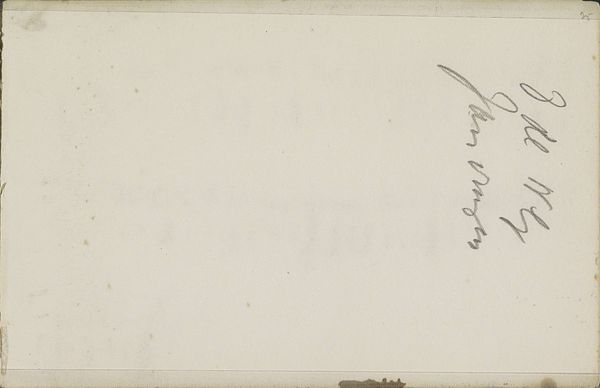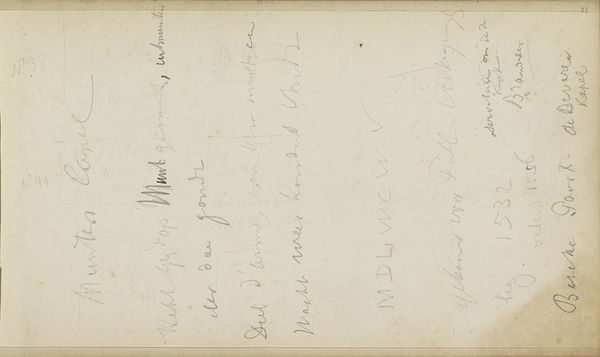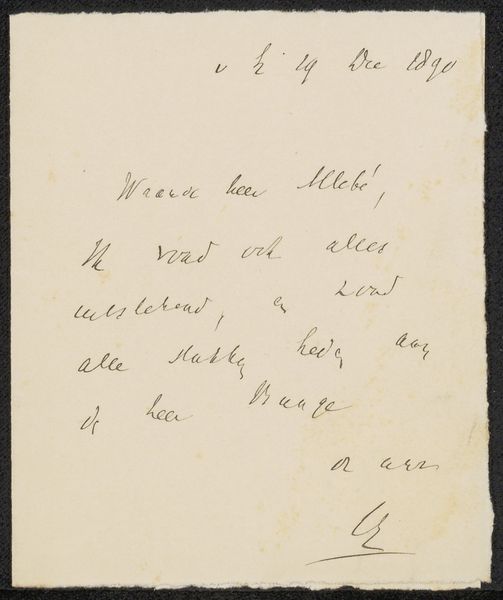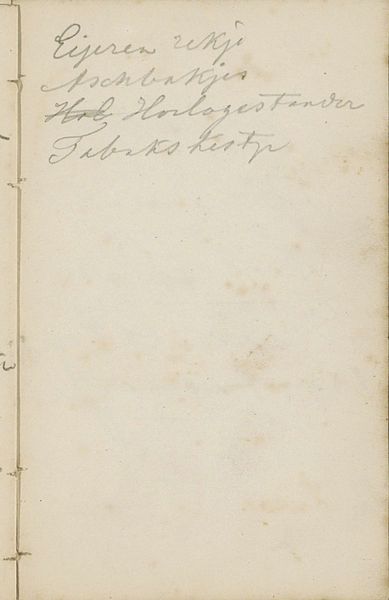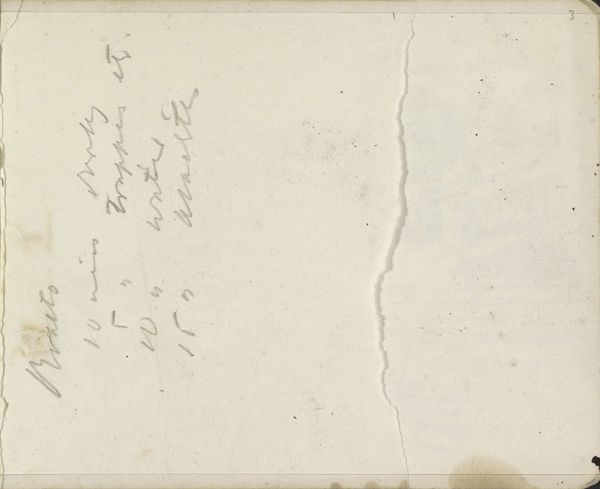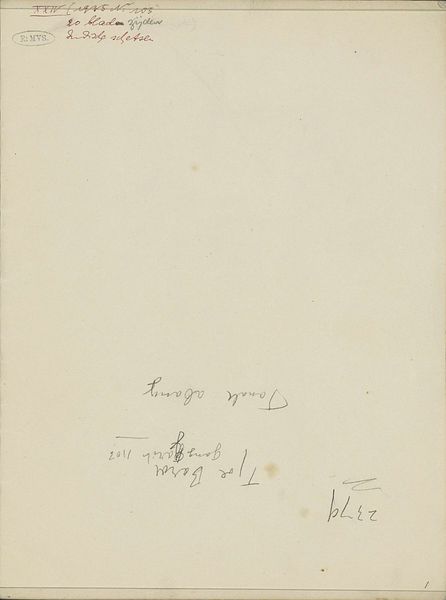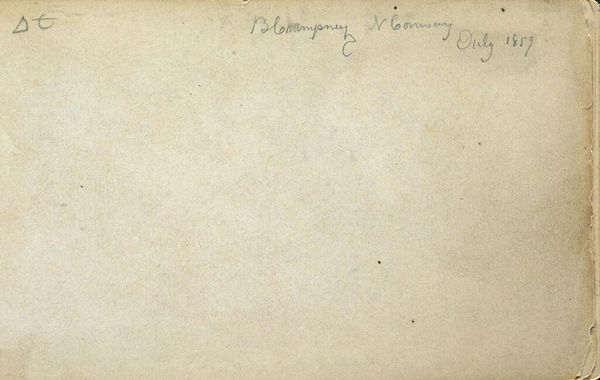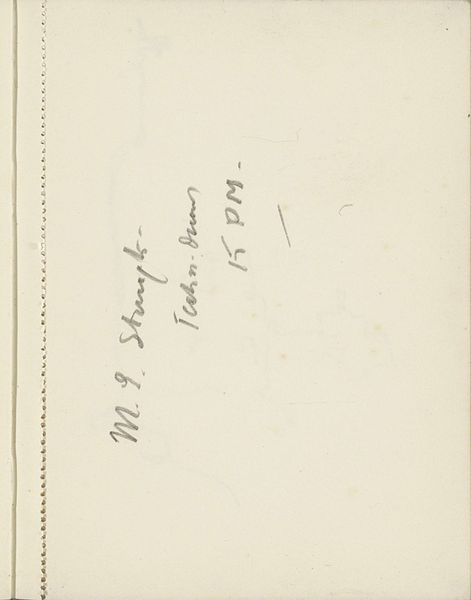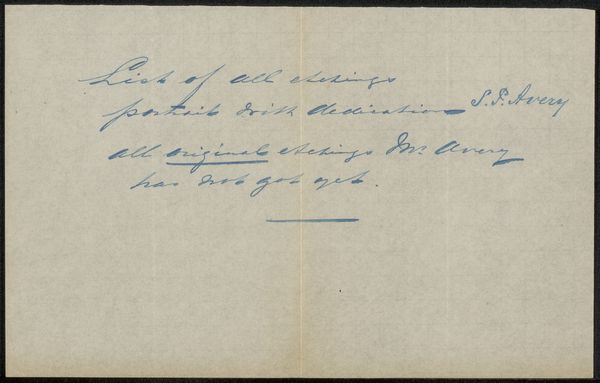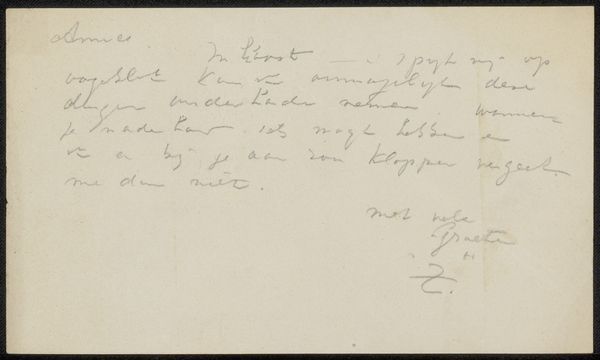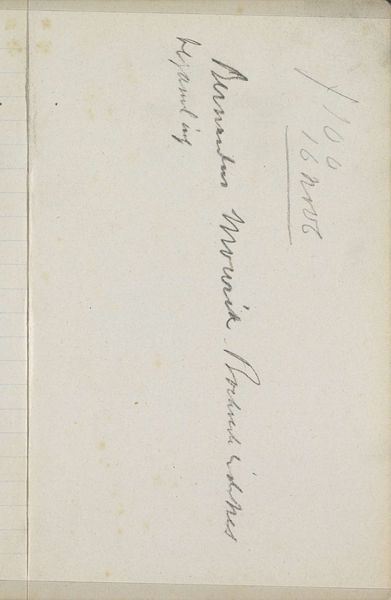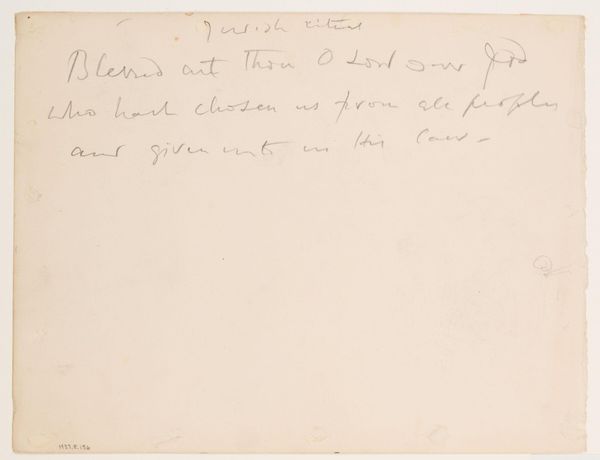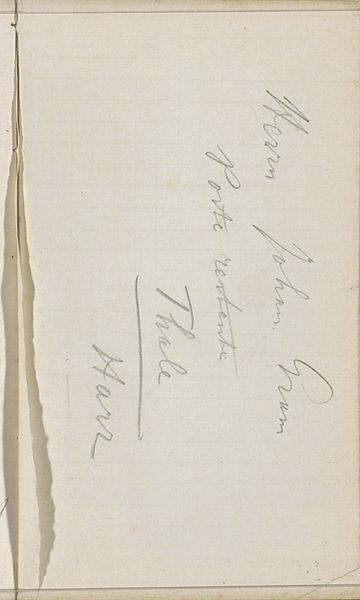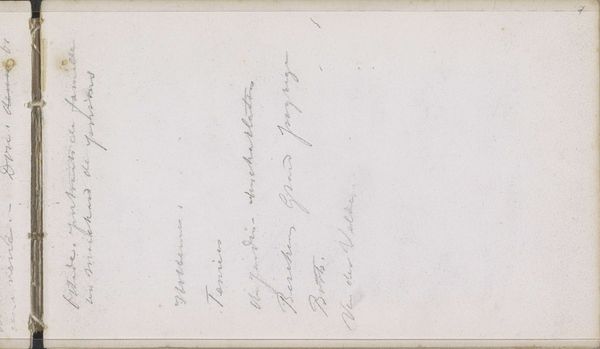
drawing, paper, ink
#
drawing
#
impressionism
#
paper
#
ink
Copyright: Rijks Museum: Open Domain
Curator: Here we have Louis Apol’s “Annotatie,” an 1880 impressionistic drawing residing here at the Rijksmuseum. It’s executed in ink on paper. Editor: Hmm, well, my first impression is…intriguing. Stark, even. It's mainly a light, creamy-beige ground with handwritten notations scrawled across it. Very ephemeral in feeling. Curator: Exactly! It is really fascinating to consider why Apol took the time to carefully draw this inscription, given its location in a region shaped by colonialism and deeply intertwined with socio-economic inequality. What might seem to be a benign landscape study potentially challenges our conventional notions of art history, particularly through the lenses of gender, race, and class. Editor: You're thinking of it almost as a hidden history then? For me, it has the look of a quick field note – a detail he wanted to remember later, perhaps as an ingredient in a larger painting. It reminds me that art is very often about recording, observing and processing your reality. Curator: Absolutely! And perhaps even subverting expectations. Consider the period when “Annotatie” was created – a period steeped in social and political ferment, so a seemingly harmless inscription can act as silent protest. Editor: Oh, I like that reading! Thinking about his perspective… maybe he felt restricted, needing to write to make sure to explore outside convention? It can speak of art’s innate desire to explode beyond its constraints, almost like doodling on a boring piece of officialdom. Curator: Precisely, which is so key when we contextualize “Annotatie” – as a microcosm of larger issues related to artistic freedoms within hierarchical social structures. Apol creates that space of dialogue between representation and resistance. Editor: You've turned what looked like just a scribbled note into a revolution! Seriously, looking at this drawing, it feels like a challenge to always find hidden depths, to understand that there's always more to uncover beneath the surface. Curator: It encourages one to delve into the intersectionality that lies beneath the surface, in every piece of art, in every stroke. Editor: It is as if we too are noting the landscape with every new viewing and interpretation.
Comments
No comments
Be the first to comment and join the conversation on the ultimate creative platform.
